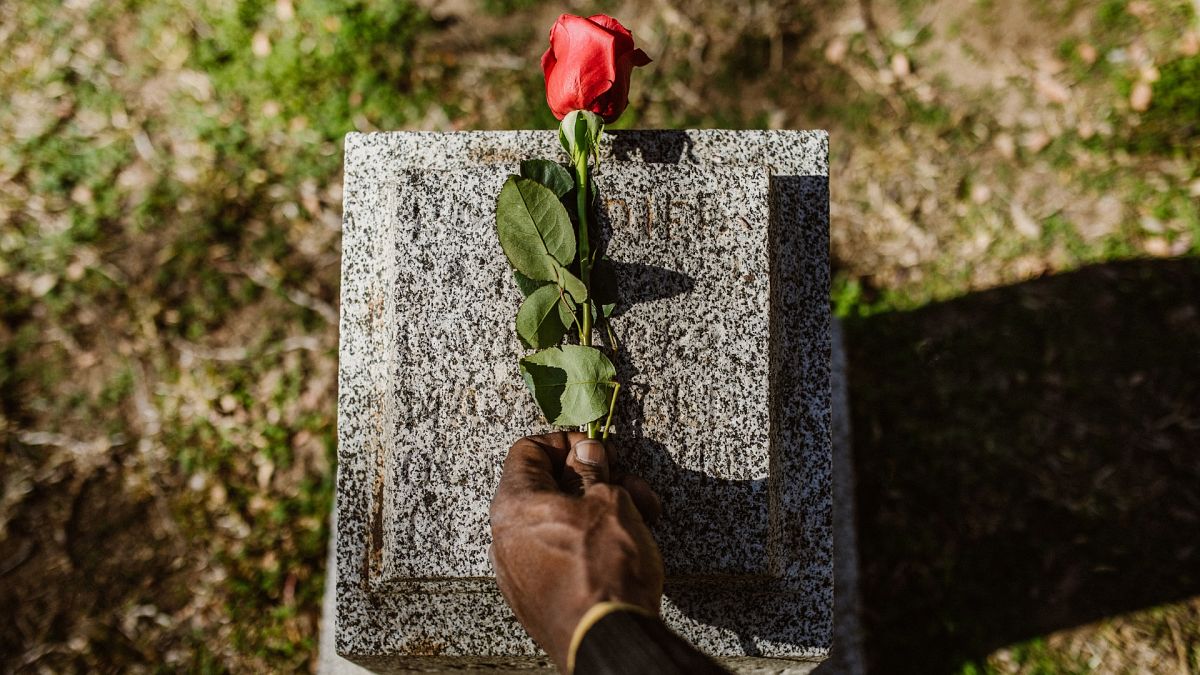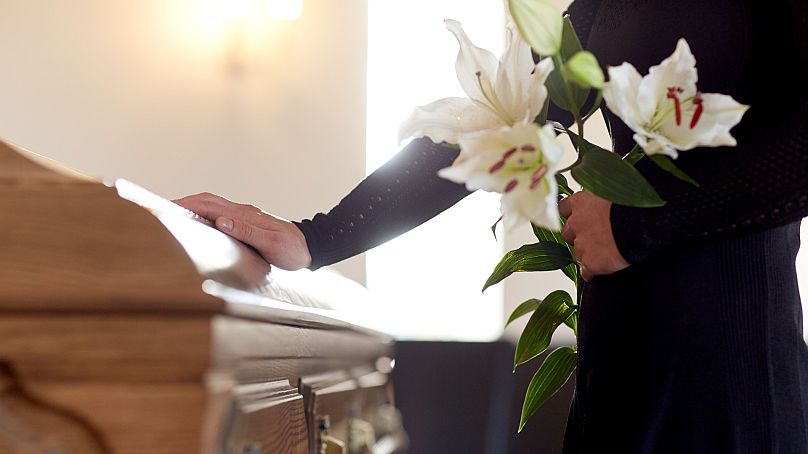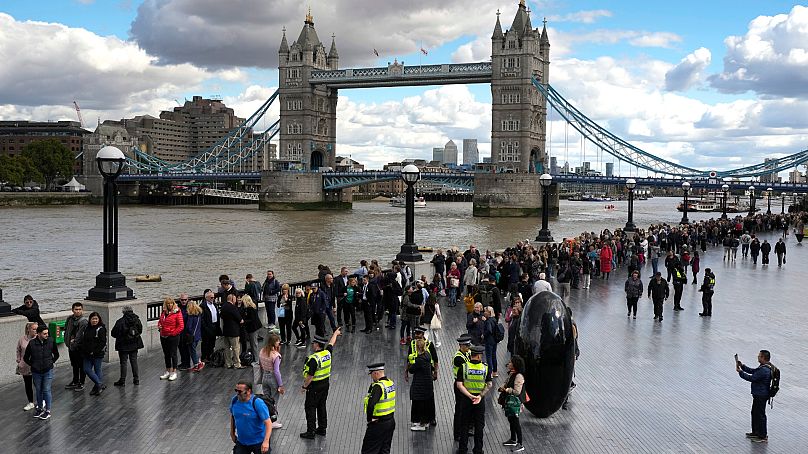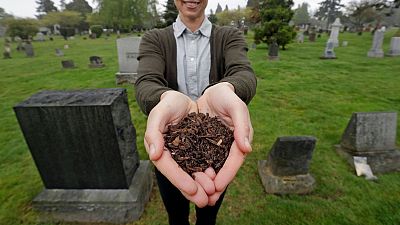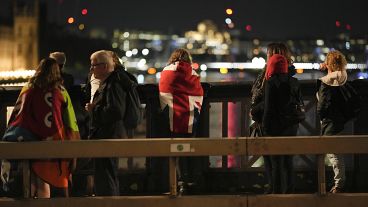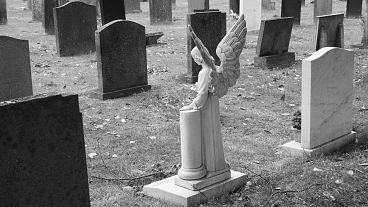John Adams' mother died when he was 12. Now a funeral director, he's leading a campaign to get lessons in bereavement in UK schools.
Losing a parent is a difficult experience, but the lasting effects of that loss is only compounded by it happening during childhood. John Adams, President of the UK’s National Association of Funeral Directors has started a petition to give children lessons in grief at schools.
It’s a cause that’s close to Adams’ heart, having lost his own mother when he was 12 years old. “It was so overwhelming,” he recalls. “For a young person, your mum, your dad, or your siblings, are your entire world.” When Adams' world fell apart, there was no structure of care for him in his school, and many of the adults around him didn’t know what he needed.
Adams isn’t alone in losing a parent young. In the UK alone, 111 children lose a parent every single day. The number of grieving children is staggering when you consider that doesn’t include losing grandparents, siblings or other members of their extended family.
Despite how common it is for children to experience grief, our funeral traditions aren’t built to handle death as openly as needed. In Victorian England, families were more comfortable and familiar with death. Queen Victoria’s long period of grief and practices like posing dead bodies for family photos helped people confront the nature of death more resolutely.
But the trauma of the two world wars and waning interest in religious customs has moved people away from a matter-of-fact approach to death, suggests Adams. Direct Cremation is the latest trend in funerals. More affordable than a typical funeral, the body is cremated without the family present and the ashes are sent to them later for scattering.
“I think it's a great option to have in the UK,” Adams says. My concerns for the UK public is whether they are fully aware of what they're actually getting and in five years time, will they feel they had the closure and the platform to say goodbye?”
Learning from other death cultures
American mortician and campaigner for “death acceptance”, Caitlin Doughty has travelled the world researching different cultural techniques for handling death. “Overall children are given more access to the dead body in Europe,” she explains when compared with the more austere approach in the UK.
“Many cultures from Ireland to Spain to the Netherlands have time spent with the dead body that a child might be present for. This time with the body can be important, as it makes death seem more normal,” Doughty adds.
“We find what we don't understand scary and dark. If death is talked about in hushed, secret tones, a child will naturally think death is something to be feared,” Doughty continues. Children will internalise an environment that isn’t safe to bring up their questions in, allowing fears to grow.
Instead, she argues they should be allowed to participate in death rituals in ways that lean into their talents and abilities. “There are many small rituals that are perfect for a child's level of involvement and understanding. If the dead person is being cremated in a cardboard or wooden coffin, a child may want to draw colourful pictures and tributes to the person on the outside of the container. A child may also want to put letters, drawings, or even stuffed animals inside the coffin to be cremated,” she explains.
Tackling childhood trauma
It’s so important that we can tackle grief in children, as traumatised children can become traumatised adults. “Building young people up is so much easier than repairing broken adults,” Adams says.
Since Adams started his petition for better children’s education around death, he’s had people in their 60s and 70s reach out to him thanking him because they still hold onto bitterness from being removed from a parents’ funeral all those years ago.
“Bereavement has direct and indirect effects. Directly the child can experience emotional anguish, loss, longing, anxiety, depression and can regress, withdraw and feel constantly low, panicky and traumatised,” explains Lorraine Sherr, Professor of Clinical and Health Psychology at UCL.
Depending on the loss, Sherr details indirect responses the child may experience. “The grief of others means that the child loses for example one parent, but the other parent is now not the same happy, contented and productive person. With a bereavement can come economic and social losses that can affect the child's environment, diet, security and stimulation levels. All these elements are crucial for child development and bereavement can dramatically impact them.”
The long term impact of a family bereavement on a child also extends to the family environment changing dramatically. In badly handled situations, Sherr notes how children can lose safe environments and support networks.
The key is to respect a child’s experience of grief, Sherr believes. Allowing them to grieve in their way and giving them the space to talk about their emotions. “Remember children are often resilient and can grow well. Young children may be feeling sad but not show their emotions in the way adults do - they may laugh and play, go out and have fun. This does not mean that they do not care, or are not hurting,” Sherr says.
Changing funeral practices
As President of the NAFD, Adams is also a practising funeral director. He’s dealt with many families who experience grief in their own unique ways. In his experience, he’s found allowing people to connect with the funeral process in ways meaningful to them can dramatically alter their ability to process the death.
He recalls a woman whose father was murdered. Six months after the funeral, she called him to say she was struggling. Adams suggested she come to his office for a coffee and a chat. He ended up taking her around the chapel, the mortuary and the coffin workshop.
“Suddenly, she saw the big picture. I could see the sense of relief in her. Obviously, the difficulties and the trauma would still be there. But it's about how we give some control and empowerment to families,” Adams says.
For Adams, giving children the ability to connect with death through school services could change how people handle the inevitable trauma of losing parents. Almost none of his school friends knew how to talk to him about him losing his mother.
Giving children the tools to be able to help each other grieve is part of Adams’ campaign. He still remembers the one boy in his year who sent him a card. “I was overwhelmed. It meant so much,” Adams said. They’re still in contact and Adams was in touch when the man’s father died to try and repay the kindness he’d given him all those decades ago.
“Let's teach this stuff, let's be proactive,” Adams says. “It's like a burning house, some schools in the UK are calling a counsellor like the fire brigade, but the damage is already done. Let's put smoke alarms in place well in advance, let’s have the difficult conversations.”
“You can't stop it happening, but you can help so much earlier.”
